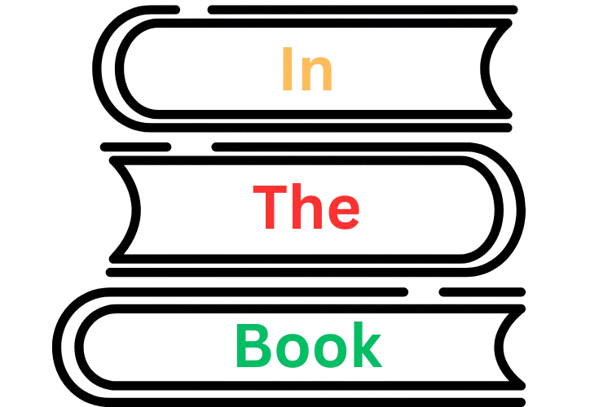The Bible is a profound and intricate collection of texts that holds significant meaning for billions worldwide. Understanding its structure can provide deeper insight into its teachings and narratives.
The Bible is divided into two main sections: the Old Testament and the New Testament, each containing numerous books which are further divided into chapters. Let us talk about the details of how many chapters in the bible and what each section includes.
Contents
- The Old Testament
- The New Testament
- How many chapters in the bible
- Importance of Chapters and Verses
- Tiny Marvels
- The Chapter that Stands Tall: Psalm 119
- Reading the Bible
- Other Chapters Bursting with Verses
- Conclusion
- Some Questions
- How many chapters are in the Old Testament?
- How many chapters are in the New Testament?
- Who created the chapter and verse divisions in the Bible?
- What is the longest book in the Bible?
- How can one read the entire Bible in a year?
- Read More:
The Old Testament
The Old Testament is the first part of the Christian Bible and is also a significant text in Judaism. It is composed of 39 books, which are categorized into Law, History, Poetry, and Prophecy. Each book varies in length and content, contributing uniquely to the overall narrative and teachings of the Bible.
The Pentateuch or Torah: The first five books, Genesis, Exodus, Leviticus, Numbers, and Deuteronomy, are foundational. Genesis, with its 50 chapters, begins with the creation of the world and the stories of the patriarchs. Exodus, containing 40 chapters, details the Israelites’ escape from Egypt and their journey to the Promised Land.
Leviticus (27 chapters), Numbers (36 chapters), and Deuteronomy (34 chapters) provide laws and further narrative on the Israelites’ journey.
Historical Books: These books, including Joshua, Judges, Ruth, Samuel, Kings, Chronicles, Ezra, Nehemiah, and Esther, recount the history of the Israelites from their conquest of Canaan to their exile and return.
For example, 1 Samuel has 31 chapters detailing the rise of King Saul and the early life of David.
Poetic Books: These include Job, Psalms, Proverbs, Ecclesiastes, and Song of Solomon. The Book of Psalms, with 150 chapters, is the longest book in the Bible, filled with hymns and prayers. Proverbs (31 chapters) offers wisdom and practical advice.
Prophetic Books: Divided into Major and Minor Prophets, these books contain the prophecies and messages from God delivered by prophets like Isaiah (66 chapters), Jeremiah (52 chapters), and Ezekiel (48 chapters).
The 12 Minor Prophets, including Hosea, Joel, and Amos, offer shorter books yet still rich in prophetic content.
The New Testament
The New Testament focuses on the life, teachings, and works of Jesus Christ and the early Christian Church. It consists of 27 books, which are categorized into the Gospels, History, the Epistles, and Prophecy.
The Gospels: Matthew (28 chapters), Mark (16 chapters), Luke (24 chapters), and John (21 chapters) detail the life, ministry, death, and resurrection of Jesus Christ. Each Gospel presents a unique perspective on Jesus’ life and works.
The Acts of the Apostles: Commonly known as Acts, this book (28 chapters) narrates the early history of the Christian Church after Jesus’ ascension, focusing on the apostles’ work, particularly Peter and Paul.
The Epistles: These are letters written by apostles such as Paul, Peter, James, and John to various Christian communities and individuals. Romans (16 chapters), Corinthians, Galatians, Ephesians, Philippians, Colossians, Thessalonians, Timothy, Titus, Philemon, Hebrews, James, Peter, John, and Jude all provide doctrinal teachings and guidance for living a Christian life.
Some letters, like Philemon, consist of just one chapter, while others, like 1 Corinthians, have 16 chapters.
Revelation: The final book of the New Testament, Revelation (22 chapters), offers a prophetic vision of the end times and the new creation, written by John.
How many chapters in the bible
When adding up all the chapters, the Bible comprises a total of 1,189 chapters. The Old Testament has 929 chapters, and the New Testament has 260 chapters. This structure allows for organized study and reference, aiding believers and scholars alike in exploring its depths.
Importance of Chapters and Verses
The division of the Bible into chapters and verses was not part of the original manuscripts. These divisions were introduced later to facilitate easier reference, reading, and study. Stephen Langton, an Archbishop of Canterbury, is credited with creating the chapter divisions in the early 13th century.
The verse divisions were later added by Robert Estienne, a French printer, in the 16th century. These additions have significantly enhanced the study and accessibility of the Bible.
Tiny Marvels
Among the vast expanse of the Bible’s chapters and books lie numerous short yet profound narratives. These tiny marvels, such as the Book of Ruth with its four chapters and Philemon, a single-chapter epistle, offer deep insights and impactful lessons in a concise format.
Each short story, despite its brevity, encapsulates significant moral, historical, or spiritual themes, showcasing the richness and diversity of the Bible’s literary tapestry. These compact tales provide powerful messages that resonate across time and cultures.
The Chapter that Stands Tall: Psalm 119
Psalm 119 holds a special place in the Bible as the longest chapter, with a total of 176 verses. This remarkable chapter is dedicated to the beauty and power of God’s laws. It is an acrostic poem organized into 22 stanzas, each corresponding to a letter of the Hebrew alphabet.
Every verse in each stanza begins with the same Hebrew letter, showcasing the poetic structure and depth of this chapter. Psalm 119 is a profound meditation on the importance of following divine commandments and finding joy in God’s word.
Reading the Bible
Many believers and scholars adopt various methods to read and study the Bible. Some follow annual reading plans that guide them through the entire Bible in a year, often by reading a few chapters daily from both the Old and New Testaments. This balanced approach helps readers appreciate the continuity and connection between the two sections.
Others may focus on one book at a time, diving deep into its context, themes, and messages. Study Bibles and commentaries can offer additional insights and explanations, enriching the reading experience.
Other Chapters Bursting with Verses
Beyond the general structure, specific chapters in the Bible are particularly rich in content, containing numerous verses that delve deeply into theological, moral, and historical themes. Chapters like Psalm 119, with its 176 verses, exemplify this richness, offering extensive meditations on the law of God.
Similarly, chapters in prophetic books, such as Isaiah 53, provide profound insights into messianic prophecies. These chapters, bursting with verses, highlight the Bible’s depth and complexity, encouraging readers to explore and reflect on its multifaceted messages.
Conclusion
The Bible is a profound text with a total of 1,189 chapters spread across 66 books. Each chapter and verse plays a role in conveying the overarching narrative and teachings of the Bible.
Whether read for religious devotion, historical insight, or literary appreciation, understanding its structure enhances the reading experience and provides deeper comprehension of its messages.
Some Questions
How many chapters are in the Old Testament?
The Old Testament has 929 chapters spread across 39 books.
How many chapters are in the New Testament?
The New Testament contains 260 chapters in 27 books.
Who created the chapter and verse divisions in the Bible?
The chapter divisions were created by Stephen Langton in the 13th century, and Robert Estienne introduced the verse divisions in the 16th century.
What is the longest book in the Bible?
The longest book in the Bible is Psalms, with 150 chapters.
How can one read the entire Bible in a year?
Many people follow a daily reading plan, which involves reading a few chapters each day from both the Old and New Testaments.
Read More:
- The Real Reason Invoices Go Unpaid — And How Collection Automation Can Fix It
- Best Places to Buy Diamonds and Engagement Rings Online
- Building Focus and Strategy Through Interactive Digital Experiences
- How Students’ Reading Interests Influence Their Motivation and Performance in Writing Assignments
- The Damages Resulting from the Use of Suboxone

Chandler is an avid automobile enthusiast who is passionate about all things on wheels. From the latest car models to classic vintage rides, I love exploring the automotive world’s intricate details and engineering marvels. With years of experience in test-driving, reviewing, and analyzing cars, I provide readers with comprehensive insights and honest opinions.



























